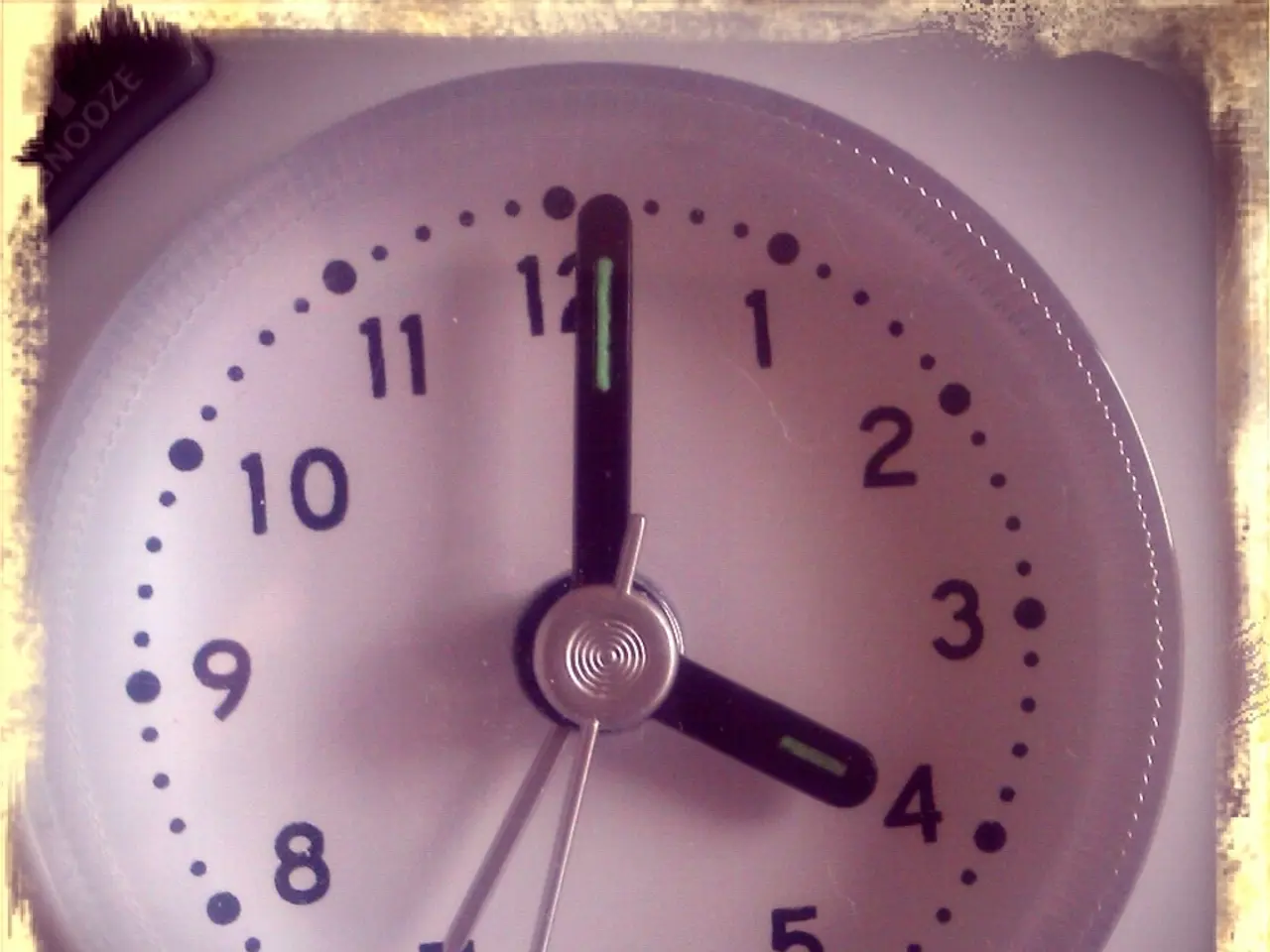Rapid Beat Setup Guide
In the world of antique clocks, maintaining and repairing these timeless pieces can be a rewarding endeavour. For those who own a pendulum-driven wall clock, understanding how to set the beat is crucial for ensuring its proper functioning. Here's a comprehensive guide on adjusting the crutch, the rod or arm that connects the clock's escapement to the pendulum, for optimal beat.
To begin, start the pendulum gently and listen carefully to the tick-tock sounds produced by the escapement. You want these sounds to be evenly spaced, what's called an "even beat." If the beat is uneven, the crutch is not centered.
Locate the crutch, typically a thin rod or arm attached to the escapement, with a loop or fork at the end where the pendulum swings. Gently move the crutch slightly to the left or right while the pendulum swings. Sometimes, this may require loosening a set screw, depending on the clock’s design. After each small adjustment, listen again. The goal is to achieve a perfectly even, rhythmic beat.
Once the beat is even, check if the clock keeps time accurately over several hours. If it does, the crutch position is correct. If not, repeat the adjustment process.
It's important to note that adjusting the crutch is often enough to solve most pendulum clock beat issues, as it ensures the escapement locks and unlocks evenly on both sides, which is essential for accurate timekeeping.
For those with antique clocks, including 400-day clocks, a horolovar guide can be useful in maintaining and repairing these intricate timepieces. This guide provides information on how to determine the correct suspension spring for a 400-day clock.
In summary, adjusting a clock's beat is a crucial skill for clock enthusiasts. With patience and attentive listening, you can ensure your pendulum clock runs smoothly, even after it has fallen silent. Understanding the function and importance of beat scales in clocks can also help in the examination of antique clocks.
[1] Source: The National Association of Watch and Clock Collectors (NAWCC)
For those interested in updates on antique and vintage clocks, subscribing to Antique and Vintage Clocks can provide the latest posts related to these fascinating timepieces.
- Adjusting the beat of mechanical clocks requires patience and attentive listening, as it ensures smooth operation, even after a pendulum clock has fallen silent.
- For enthusiasts who own vintage clocks or antique clocks like 400-day clocks, a horolovar guide can be beneficial in maintaining and repairing these intricate timepieces.
- Perfecting an even beat in pendulum-driven clocks not only improves the aesthetics of home-and-garden décor but also contributes to the unique lifestyle associated with fashion-and-beauty in collecting and preserving timeless pieces like antique and vintage clocks.




